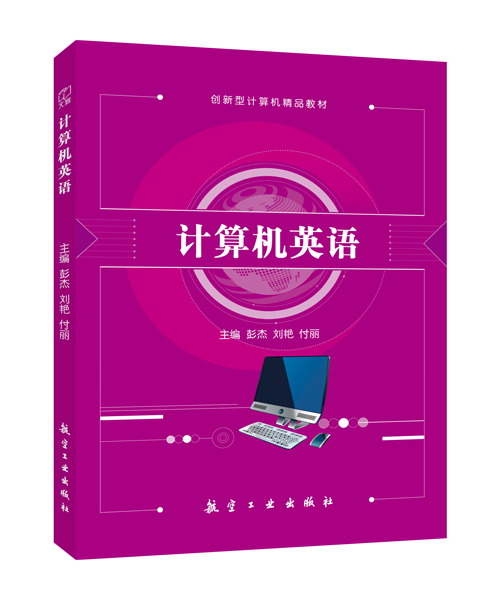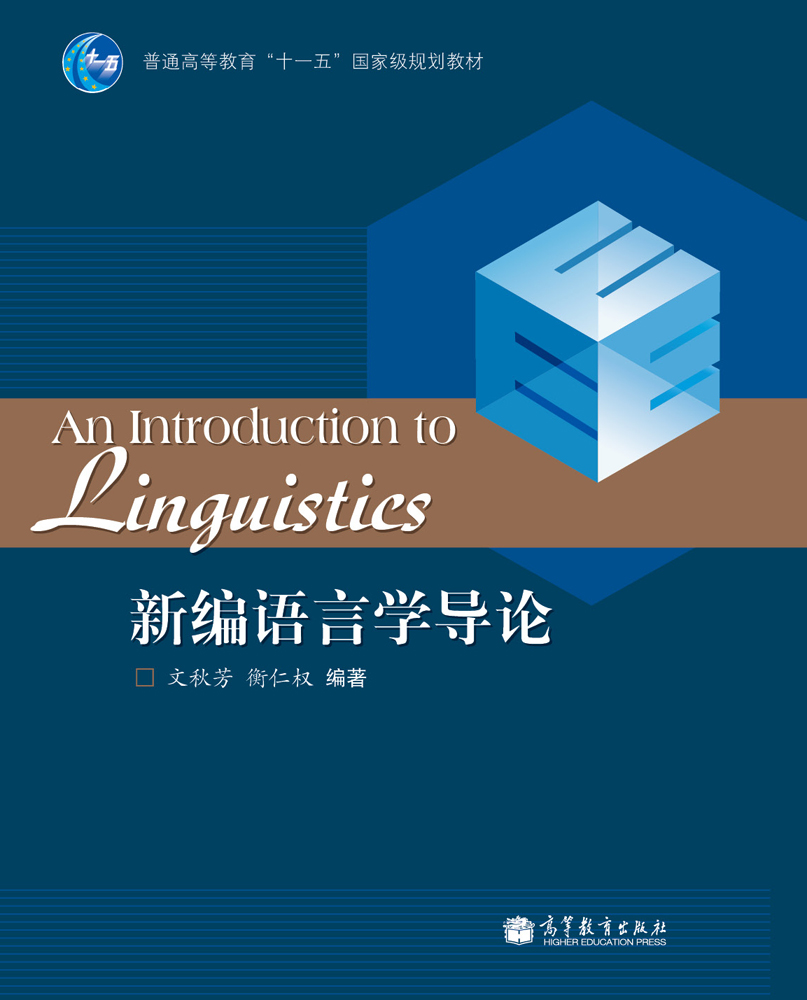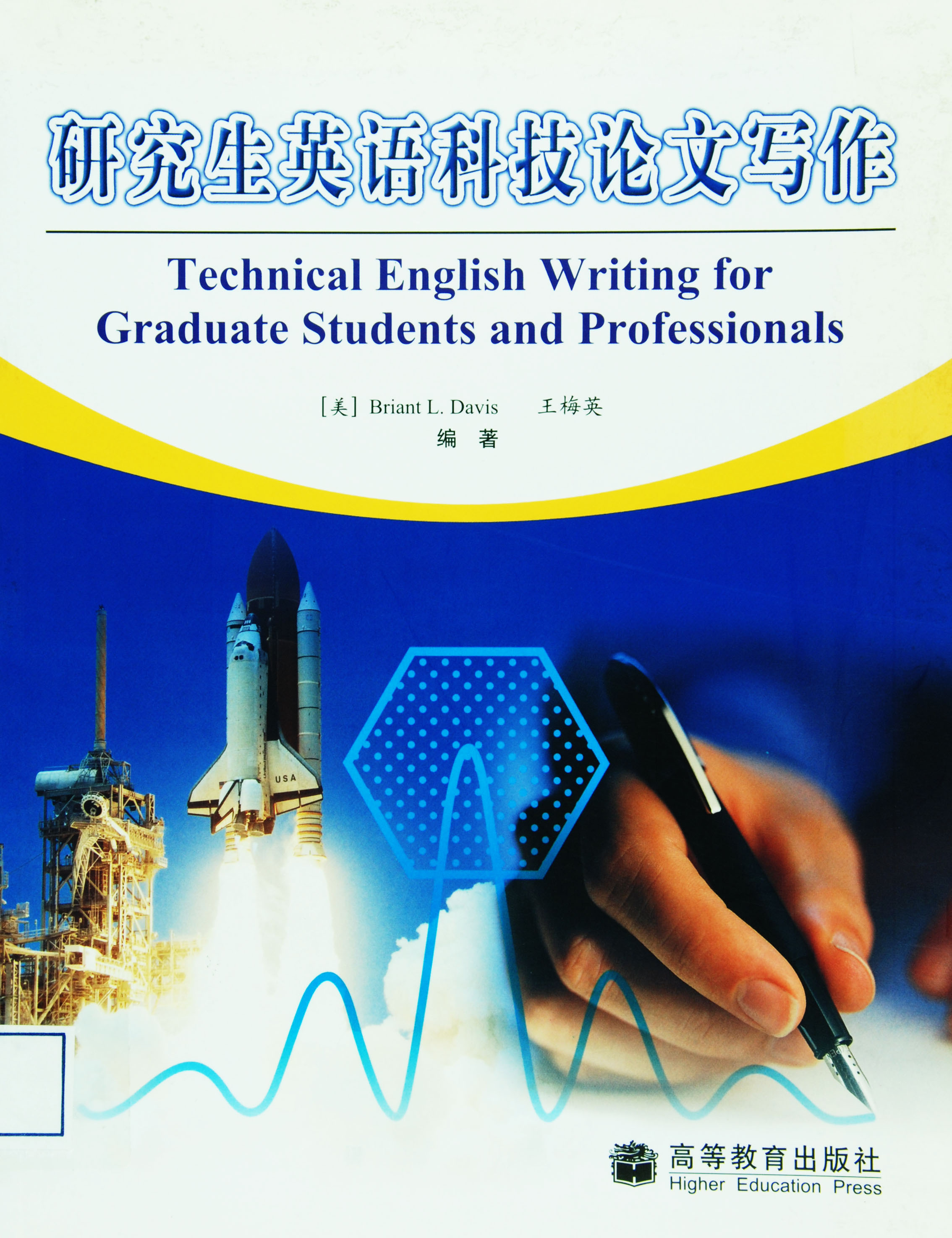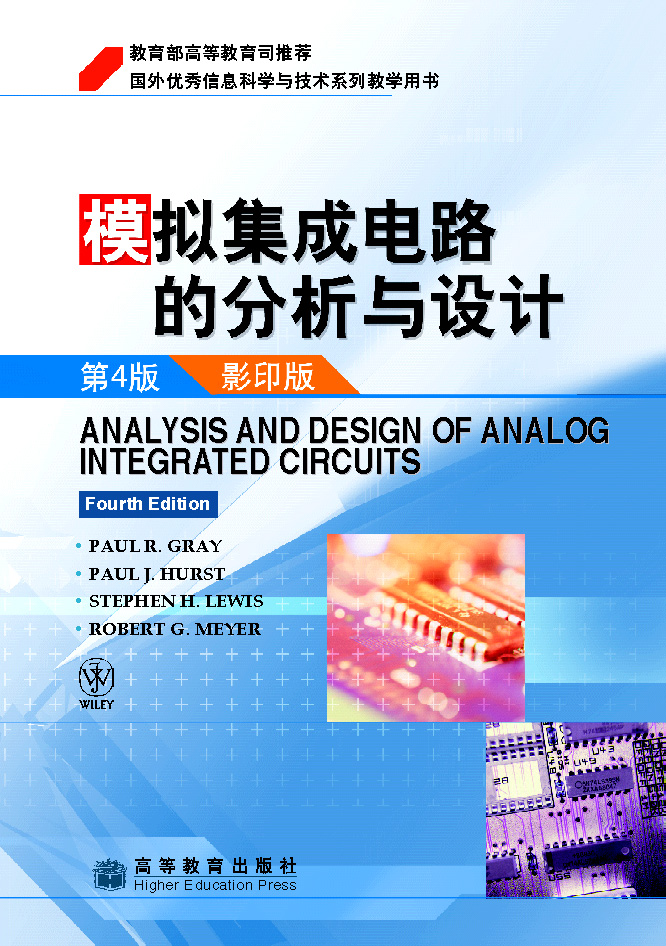计算机英语(双色)
定价:¥49.80
作者: 彭杰,刘艳,付丽
出版时间:2025-07
最新印次日期:2025-7
出版社:航空工业出版社
- 航空工业出版社
- 9787516510452
- 1版
- 225506
- 62260698-6
- 2025-07
- 工学
- 计算机类
- 电子与信息大类
- 计算机类
- TP3
- 计算机类
- 本科 高职 五年制高职 高职本科(应用型本科) 中职
内容简介
本书是为培养计算机人才的专业英语能力而编写的教材,共12章,其主要内容包括:计算机概述、计算机系统结构、计算机软件、操作系统、编程和语言、数据库、计算机网络、因特网、计算机安全、云计算、物联网和电子商务。
本书内容系统、紧跟时代、结构合理、图文并茂,可供高等院校计算机相关专业学生使用。
本书内容系统、紧跟时代、结构合理、图文并茂,可供高等院校计算机相关专业学生使用。
目录
Chapter 1 Introduction to Computers
1.1 What is a Computer
1.2 History
1.2.1 First Generation (1944-1958): Vacuum Tubes
1.2.2 Second Generation (1959-1963): Transistors
1.2.3 Third Generation (1964-1970): Integrated Circuits
1.2.4 Fourth Generation (1971-present): Microprocessors
1.3 Categories
1.3.1 Personal Computers
1.3.2 Workstations
1.3.3 Minicomputers
1.3.4 Mainframe Computers
1.3.5 Supercomputers
1.4 Future Developments
Words
Phrases
Abbreviations
Notes
Exercise
Reading Material
Chapter 2 Computer System Organization
2.1 CPU
2.1.1 Arithmetic and Logic Unit
2.1.2 Control Unit
2.1.3 Register Set
2.2 Memory Subsystem
2.2.1 RAM
2.2.2 ROM
2.3 I/O Subsystem
2.3.1 Input Devices
2.3.2 Output Devices
2.3.3 Other I/O Devices
Words
Phrases
Abbreviations
Notes
Exercise
Reading Material
Chapter 3 Computer Software
3.1 System Software
3.2 Application Software
3.2.1 Productivity Software
3.2.2 Business Software
3.3 Different Forms of Software
3.4 Software Development Life Cycle
Words
Phrases
Abbreviations
Notes
Exercise
Reading Material
Chapter 4 Operating System
4.1 Components
4.1.1 Shell
4.1.2 Kernel
4.2 Features
4.3 Types
4.4 Examples
4.4.1 Windows
4.4.2 UNIX
4.4.3 Linux
4.4.4 Mac OS
4.4.5 Mobile Operating System
Words
Phrases
Abbreviations
Notes
Exercise
Reading Material
Chapter 5 Programming and Languages
5.1 Programming Languages
5.1.1 Machine Languages
5.1.2 Assembly Languages
5.1.3 Third-generation Languages
5.1.4 Fourth-generation Languages
5.1.5 Natural Languages
5.2 Object-oriented Programming
5.2.1 Basic Concepts
5.2.2 OOP Language
5.3 Visual Programming
5.4 Web Programming
5.4.1 HTML
5.4.2 Java
5.4.3 JavaScript
5.4.4 XML
Words
Phrases
Abbreviations
Notes
Exercise
Reading Material
Chapter 6 Database
6.1 Data
6.1.1 Data Integrity
6.1.2 Data Security
6.2 Database Management System
6.2.1 Components
6.2.2 Data Abstraction
6.3 Data Models
6.3.1 Object-based Logical Models
6.3.2 Record-based Logical Models
6.4 Structured Query Language
6.4.1 Data Definition Language
6.4.2 Data Manipulation Language
6.5 Data Mining
6.5.1 Data Warehouse
6.5.2 Data Mining
Words
Phrases
Abbreviations
Notes
Exercise
Reading Material
Chapter 7 Computer Network
7.1 Types
7.1.1 Local Area Network
7.1.2 Metropolitan Area Network
7.1.3 Wide Area Network
7.1.4 Internetwork
7.2 Topologies
7.2.1 Star Network
7.2.2 Bus Network
7.2.3 Ring Network
7.2.4 Hybrid Network
7.2.5 Mesh Network
7.3 Models
7.3.1 OSI Reference Model
7.3.2 TCP/IP Reference Model
7.4 Networking Devices
7.4.1 Hub
7.4.2 Repeater
7.4.3 Bridge
7.4.4 Switch
7.4.5 Router
7.4.6 Network Card
7.5 Wireless Network
7.5.1 Wireless Transmission
7.5.2 Wireless LAN
7.5.3 Issues
Words
Phrases
Abbreviations
Notes
Exercise
Reading Material
Chapter 8 Internet
8.1 Internet Addressing
8.1.1 IP Address
8.1.2 DNS
8.1.3 Address Resolution Mechanism
8.2 Internet Services
8.2.1 World Wide Web
8.2.2 FTP
8.2.3 E-mail
8.2.4 Telnet
8.3 Access to Internet
8.3.1 Dial-up Connection
8.3.2 ISDN
8.3.3 DSL
8.3.4 Cable TV Internet Connection
8.3.5 Satellite Internet Connection
8.3.6 Wireless Internet Connection
Words
Phrases
Abbreviations
Notes
Exercise
Reading Material
Chapter 9 Computer Security
9.1 Basic Components
9.1.1 Confidentiality
9.1.2 Integrity
9.1.3 Availability
9.2 Threats and Attacks
9.2.1 Snooping
9.2.2 Modification
9.2.3 Masquerading
9.2.4 Repudiation of Origin
9.2.5 Denial of Service
9.3 Security Strategy
9.3.1 Prevention
9.3.2 Detection
9.3.3 Recovery
9.4 Measures to Protect Computer Security
9.4.1 Encryption
9.4.2 Restricting Access
9.4.3 Anticipating Disasters
9.4.4 Backup1
9.5 Malware
9.5.1 Types of Malware
9.5.2 Combating Malware
Words
Phrases
Abbreviations
Notes
Exercise
Reading Material
Chapter 10 Cloud Computing
10.1 Introduction
10.2 Technologies
10.2.1 Virtualization
10.2.2 Service-oriented Architecture
10.2.3 Grid Computing
10.2.4 Utility Computing
10.3 Models
10.3.1 Deployment Models
10.3.2 Service Models
10.4 Architecture
10.5 Mobile Cloud Computing
10.5.1 Enabling Technologies
10.5.2 Issues
10.6 Challenges
Words
Phrases
Abbreviations
Notes
Exercise
Reading Material
Chapter 11 Internet of Things
11.1 Introduction
11.2 Key Technologies
11.2.1 RFID
11.2.2 Sensor Network
11.2.3 Machine-to-Machine Communication
11.3 Architecture
11.4 Applications
11.4.1 Information and Analysis
11.4.2 Automation and Control
11.5 Challenges
11.5.1 Technical Issues
11.5.2 Security Concerns
11.5.3 Social and Legal Concerns
Words
Phrases
Abbreviations
Notes
Exercise
Reading Material
Chapter 12 Electronic Commerce
12.1 Introduction
12.2 Types
12.2.1 B2B
12.2.2 B2C
12.2.3 B2G
12.2.4 C2C
12.2.5 M-commerce
12.3 Enabling Forces
12.3.1 Economic Forces
12.3.2 Market Forces
12.3.3 Technology Forces
12.4 Challenges
12.4.1 Technology Challenges
12.4.2 Social and Culture Challenges
12.4.3 Management Challenges
Words
Phrases
Abbreviations
Notes
Exercise
Reading Material
单词表
词组表
缩写表
参考文献
1.1 What is a Computer
1.2 History
1.2.1 First Generation (1944-1958): Vacuum Tubes
1.2.2 Second Generation (1959-1963): Transistors
1.2.3 Third Generation (1964-1970): Integrated Circuits
1.2.4 Fourth Generation (1971-present): Microprocessors
1.3 Categories
1.3.1 Personal Computers
1.3.2 Workstations
1.3.3 Minicomputers
1.3.4 Mainframe Computers
1.3.5 Supercomputers
1.4 Future Developments
Words
Phrases
Abbreviations
Notes
Exercise
Reading Material
Chapter 2 Computer System Organization
2.1 CPU
2.1.1 Arithmetic and Logic Unit
2.1.2 Control Unit
2.1.3 Register Set
2.2 Memory Subsystem
2.2.1 RAM
2.2.2 ROM
2.3 I/O Subsystem
2.3.1 Input Devices
2.3.2 Output Devices
2.3.3 Other I/O Devices
Words
Phrases
Abbreviations
Notes
Exercise
Reading Material
Chapter 3 Computer Software
3.1 System Software
3.2 Application Software
3.2.1 Productivity Software
3.2.2 Business Software
3.3 Different Forms of Software
3.4 Software Development Life Cycle
Words
Phrases
Abbreviations
Notes
Exercise
Reading Material
Chapter 4 Operating System
4.1 Components
4.1.1 Shell
4.1.2 Kernel
4.2 Features
4.3 Types
4.4 Examples
4.4.1 Windows
4.4.2 UNIX
4.4.3 Linux
4.4.4 Mac OS
4.4.5 Mobile Operating System
Words
Phrases
Abbreviations
Notes
Exercise
Reading Material
Chapter 5 Programming and Languages
5.1 Programming Languages
5.1.1 Machine Languages
5.1.2 Assembly Languages
5.1.3 Third-generation Languages
5.1.4 Fourth-generation Languages
5.1.5 Natural Languages
5.2 Object-oriented Programming
5.2.1 Basic Concepts
5.2.2 OOP Language
5.3 Visual Programming
5.4 Web Programming
5.4.1 HTML
5.4.2 Java
5.4.3 JavaScript
5.4.4 XML
Words
Phrases
Abbreviations
Notes
Exercise
Reading Material
Chapter 6 Database
6.1 Data
6.1.1 Data Integrity
6.1.2 Data Security
6.2 Database Management System
6.2.1 Components
6.2.2 Data Abstraction
6.3 Data Models
6.3.1 Object-based Logical Models
6.3.2 Record-based Logical Models
6.4 Structured Query Language
6.4.1 Data Definition Language
6.4.2 Data Manipulation Language
6.5 Data Mining
6.5.1 Data Warehouse
6.5.2 Data Mining
Words
Phrases
Abbreviations
Notes
Exercise
Reading Material
Chapter 7 Computer Network
7.1 Types
7.1.1 Local Area Network
7.1.2 Metropolitan Area Network
7.1.3 Wide Area Network
7.1.4 Internetwork
7.2 Topologies
7.2.1 Star Network
7.2.2 Bus Network
7.2.3 Ring Network
7.2.4 Hybrid Network
7.2.5 Mesh Network
7.3 Models
7.3.1 OSI Reference Model
7.3.2 TCP/IP Reference Model
7.4 Networking Devices
7.4.1 Hub
7.4.2 Repeater
7.4.3 Bridge
7.4.4 Switch
7.4.5 Router
7.4.6 Network Card
7.5 Wireless Network
7.5.1 Wireless Transmission
7.5.2 Wireless LAN
7.5.3 Issues
Words
Phrases
Abbreviations
Notes
Exercise
Reading Material
Chapter 8 Internet
8.1 Internet Addressing
8.1.1 IP Address
8.1.2 DNS
8.1.3 Address Resolution Mechanism
8.2 Internet Services
8.2.1 World Wide Web
8.2.2 FTP
8.2.3 E-mail
8.2.4 Telnet
8.3 Access to Internet
8.3.1 Dial-up Connection
8.3.2 ISDN
8.3.3 DSL
8.3.4 Cable TV Internet Connection
8.3.5 Satellite Internet Connection
8.3.6 Wireless Internet Connection
Words
Phrases
Abbreviations
Notes
Exercise
Reading Material
Chapter 9 Computer Security
9.1 Basic Components
9.1.1 Confidentiality
9.1.2 Integrity
9.1.3 Availability
9.2 Threats and Attacks
9.2.1 Snooping
9.2.2 Modification
9.2.3 Masquerading
9.2.4 Repudiation of Origin
9.2.5 Denial of Service
9.3 Security Strategy
9.3.1 Prevention
9.3.2 Detection
9.3.3 Recovery
9.4 Measures to Protect Computer Security
9.4.1 Encryption
9.4.2 Restricting Access
9.4.3 Anticipating Disasters
9.4.4 Backup1
9.5 Malware
9.5.1 Types of Malware
9.5.2 Combating Malware
Words
Phrases
Abbreviations
Notes
Exercise
Reading Material
Chapter 10 Cloud Computing
10.1 Introduction
10.2 Technologies
10.2.1 Virtualization
10.2.2 Service-oriented Architecture
10.2.3 Grid Computing
10.2.4 Utility Computing
10.3 Models
10.3.1 Deployment Models
10.3.2 Service Models
10.4 Architecture
10.5 Mobile Cloud Computing
10.5.1 Enabling Technologies
10.5.2 Issues
10.6 Challenges
Words
Phrases
Abbreviations
Notes
Exercise
Reading Material
Chapter 11 Internet of Things
11.1 Introduction
11.2 Key Technologies
11.2.1 RFID
11.2.2 Sensor Network
11.2.3 Machine-to-Machine Communication
11.3 Architecture
11.4 Applications
11.4.1 Information and Analysis
11.4.2 Automation and Control
11.5 Challenges
11.5.1 Technical Issues
11.5.2 Security Concerns
11.5.3 Social and Legal Concerns
Words
Phrases
Abbreviations
Notes
Exercise
Reading Material
Chapter 12 Electronic Commerce
12.1 Introduction
12.2 Types
12.2.1 B2B
12.2.2 B2C
12.2.3 B2G
12.2.4 C2C
12.2.5 M-commerce
12.3 Enabling Forces
12.3.1 Economic Forces
12.3.2 Market Forces
12.3.3 Technology Forces
12.4 Challenges
12.4.1 Technology Challenges
12.4.2 Social and Culture Challenges
12.4.3 Management Challenges
Words
Phrases
Abbreviations
Notes
Exercise
Reading Material
单词表
词组表
缩写表
参考文献








